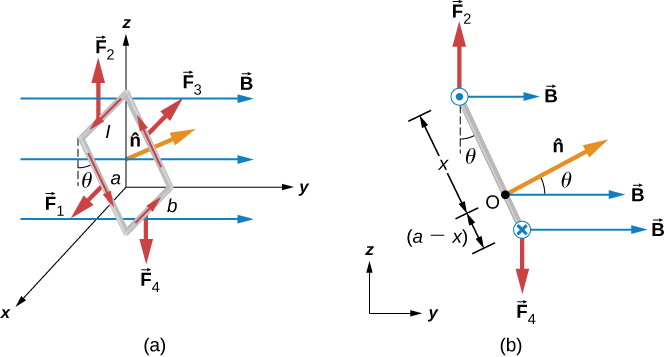| << Chapter < Page | Chapter >> Page > |
Motors are the most common application of magnetic force on current-carrying wires. Motors contain loops of wire in a magnetic field. When current is passed through the loops, the magnetic field exerts torque on the loops, which rotates a shaft. Electrical energy is converted into mechanical work in the process. Once the loop’s surface area is aligned with the magnetic field, the direction of current is reversed, so there is a continual torque on the loop ( [link] ). This reversal of the current is done with commutators and brushes. The commutator is set to reverse the current flow at set points to keep continual motion in the motor. A basic commutator has three contact areas to avoid and dead spots where the loop would have zero instantaneous torque at that point. The brushes press against the commutator, creating electrical contact between parts of the commutator during the spinning motion.

In a uniform magnetic field, a current-carrying loop of wire, such as a loop in a motor, experiences both forces and torques on the loop. [link] shows a rectangular loop of wire that carries a current I and has sides of lengths a and b . The loop is in a uniform magnetic field: The magnetic force on a straight current-carrying wire of length l is given by To find the net force on the loop, we have to apply this equation to each of the four sides. The force on side 1 is
where the direction has been determined with the RHR-1. The current in side 3 flows in the opposite direction to that of side 1, so
The currents in sides 2 and 4 are perpendicular to and the forces on these sides are
We can now find the net force on the loop:
Although this result has been obtained for a rectangular loop, it is far more general and holds for current-carrying loops of arbitrary shapes; that is, there is no net force on a current loop in a uniform magnetic field.


Notification Switch
Would you like to follow the 'University physics volume 2' conversation and receive update notifications?